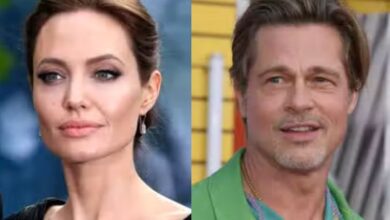Downton Abbey: A New Era review – Like a dinner party guest that won’t shut up and go home

Dir: Simon Curtis. Starring: Hugh Bonneville, Elizabeth McGovern, Maggie Smith, Michelle Dockery, Laura Carmichael, Jim Carter, Phyllis Logan. PG, 125 minutes.
Downton Abbey: A New Era is whatever the opposite of a French Exit might look like. Rather than a party guest slipping out quietly, it’s the bumptious visitor making their final, sluggish turn around the room. Their pottering seems to extend for another hour or two – or another cocktail. The first film, released in 2019, was designed to pay a final farewell to Downton’s 47 TV episodes and five Christmas specials – an opportunity to tie up a few loose ends and resolve things with a hearty slap on its own back. A New Era manages to uncover even more threads, and makes neat little bows in the most languid way possible. It’s as much of a film as an encore to the encore can be.
The plot is an aristocratic jumping of the shark: the Dowager Countess of Grantham (Maggie Smith) has come into possession of the French villa of a now-dead marquis, who she may or may not have had a dalliance with in the late 19th century. They’ve been cordially invited to the place, to be hosted by the marquis’s son (Jonathan Zaccaï) and his still-bitter mother (Nathalie Baye). “I thought it was a joke,” the Dowager Countess guffaws, after revealing the news. The rest of her family, the Crawleys, guffaw alongside her. France! What a silly notion. When the Crawleys arrive at the villa, the Earl of Grantham (Hugh Bonneville) stumbles across a family secret that leaves him questioning his entire existence. He guffaws a little more.
It’s a film locked into a one-way track of mild befuddlement, which reaches its peak when Lady Mary (Michelle Dockery) welcomes a silent film crew onto the estate – only begrudgingly so, as the fee can be used to finally fix Downton’s leaking roof. Show creator Julian Fellowes, here credited as sole screenwriter, revisits the clash between old aristocracy and new Hollywood that drove his far sharper, and more observant, Gosford Park (2001). Here, the drama is whittled down to its bare bones. Mary finds herself romantically tempted by the film’s director (Hugh Dancy’s Jack Barber). Meanwhile, her husband Henry, in a move borrowed from Bridgerton’s second season, is repeatedly mentioned by name but never seen, since Matthew Goode presumably could not be convinced to turn up for a five-minute cameo.
The rest of the household is divided roughly between those who curse the newfangled devilry that is, as the Earl put it, “kinema”, and those who go gooey-eyed at the sight of arriving stars Guy Dexter (Dominic West) and Myrna Dalgleish (Laura Haddock). It’s all played out as an extended, self-referencing metaphor – in a cinematic landscape overrun by the noisiest, busiest blockbusters the mind can conceive of, is there still a place in the people’s hearts for a little old-fashioned pageantry? The Granthams come to the production’s rescue, since silent film is at risk of being replaced by the talkie. Both become entangled in a strange alliance of fading glories.
But how different, in its heart and soul, is A New Era from the usual franchise fare it’s supposedly providing us relief from? Both are entrenched in the same comforting embrace of familiarity. Imelda Staunton’s Lady Bagshaw and Jim Carter’s Mr Carson are thrown into a scene together purely to acknowledge that the actors are married in real life. The humour never evolves far beyond chortling about the French or treating the working class as a quaint sideshow attraction.
Smith is reduced to the role of twinkly-eyed figurehead of the franchise, who everyone gathers around adoringly as she spouts more of her trademark putdowns (“Don’t steer me, I’m not a racing car,” she snaps, when someone attempts to guide her out of the room). She is wonderful, because she is Maggie Smith – and if there’s one thing Downton has been able to rely on after all this time, it’s the way stars like Penelope Winton or Elizabeth McGovern can muster up chemistry even when they’re working off a paper-thin script. And the film, of course, is deliciously ornamented by production designer Donal Woods and costume designer Anna Mary Scott Robbins.
But with A New Era nervously circling around Thomas Barrow’s (Robert James-Collier) sexuality – setting up Guy Dexter as a romantic interest, only to provide zero sexual tension beyond West aggressively biting his lip every time they talk – it’s hard to muster up much excitement for where Downton Abbey might go next. The film is set in 1928, or possibly early 1929, ending conveniently before the Wall Street Crash and all of its global ramifications. It does leave me to wonder whether, if there’s a third Downton Abbey film, the Crawleys will ever be made to face reality. For now, they’ve been left to dwell in porcelain-patterned fantasy.





